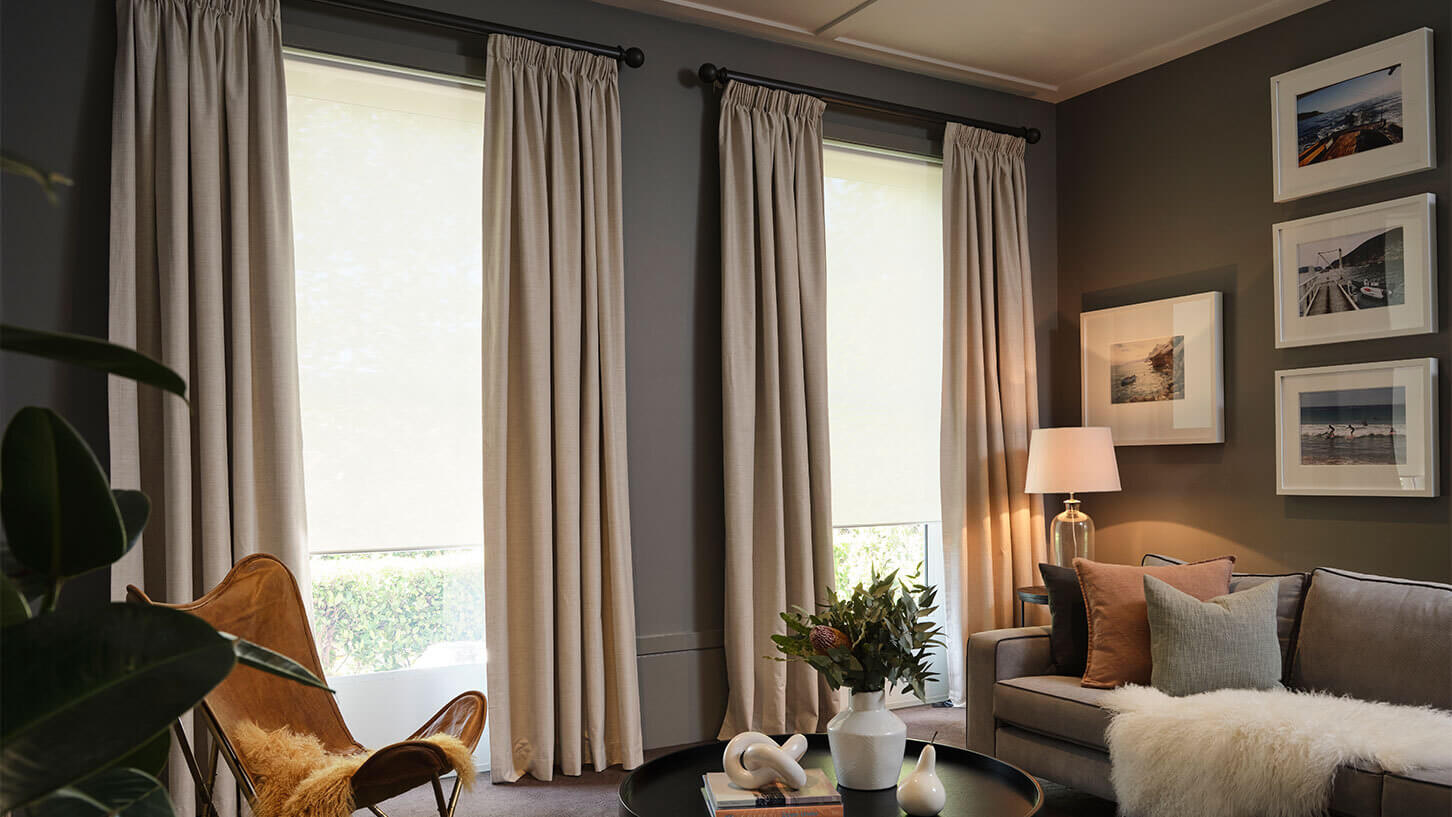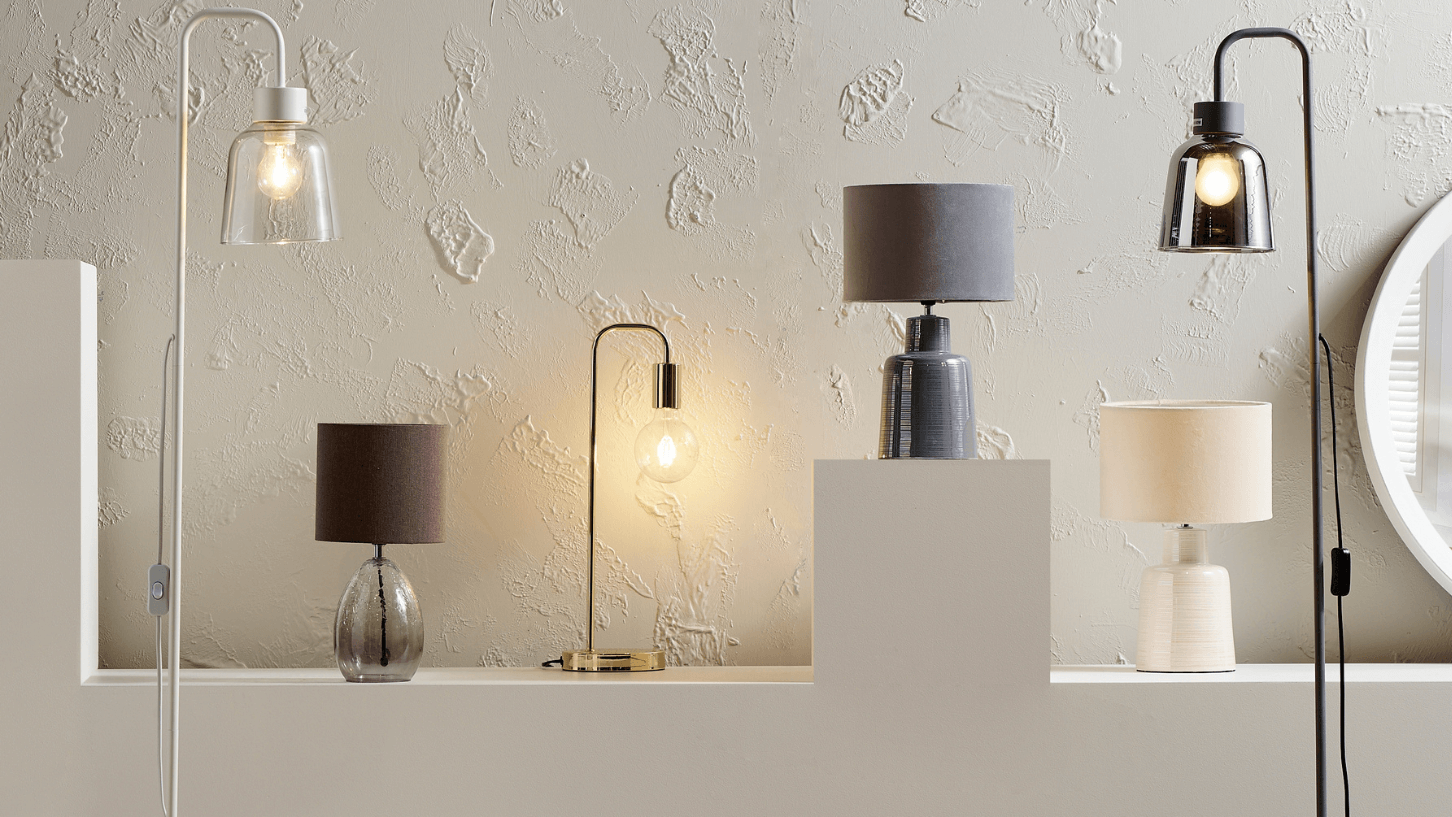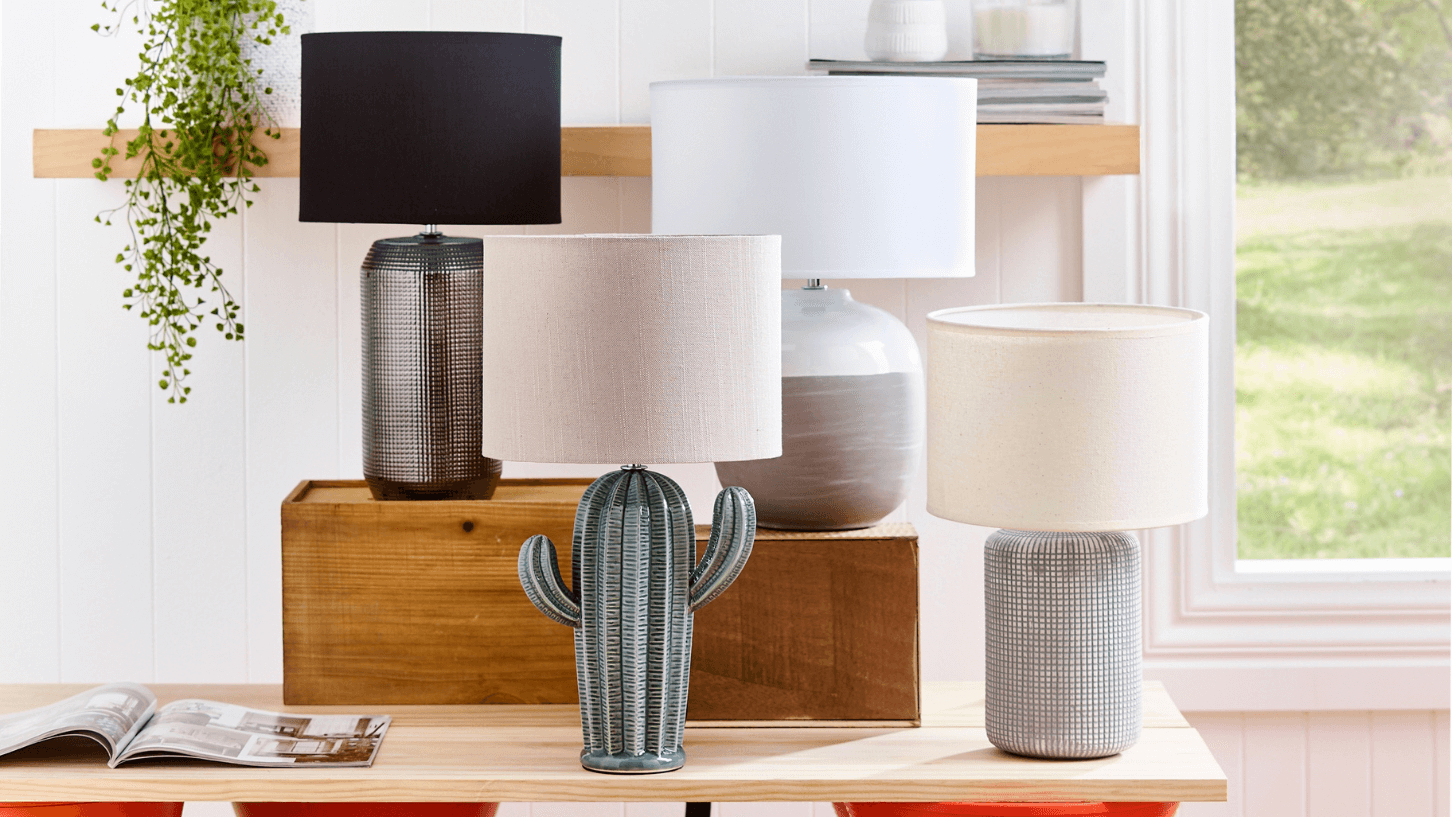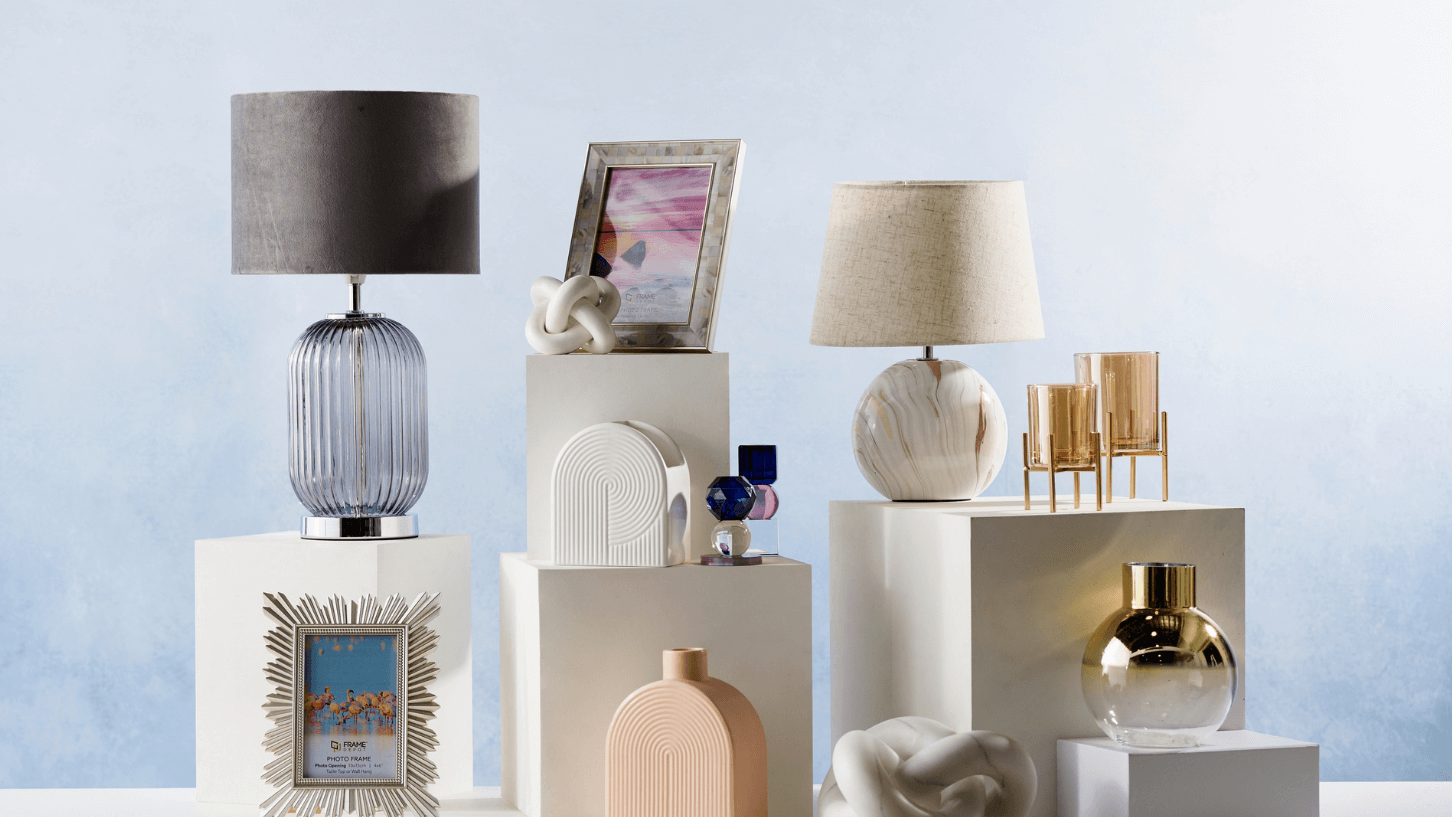 | ||
| Your browser is not supported. | ||
|
Please browse our site using any of the following options:
| ||
Living room lighting: everything you need to know

When it comes to sprucing up your living room you've got a lot to consider. Furniture, rugs, flooring and accessories all come to mind, but how much thought have you put into your lighting? The room lights in your lounge can affect how inviting and cosy it feels, so the side, table and living room ceiling lights are more important than you think. Read on and find out everything you need to know about lighting rooms in your home with style.
What type of living room lights do I need?
You have a lot of options when it comes to choosing the ideal room lights for your home. Lights can be standalone, in bunches or even on strings - what is best for your living room will depend on what you want your lighting to achieve.
Do you want bright lights for reading and cooking? Warmer lights for a comfy atmosphere? Or perhaps lighting that highlights a certain accessory or art piece in your home. Whatever kind of lighting you need, it is likely to fall into one of these three categories: ambient, accent or task lights. Ambient lights are your general lighting for the whole room, accent lighting is for showing off a specific space and task lighting is for an activity like reading or sewing. You can install your lights in one of three places:
Ceiling lights
Most homes will traditionally have lights either embedded in or hanging from the ceiling. Depending on the casing of the light or if you have a bare bulb, living room ceiling lights can emit a wide cone of light and it only takes one or two to comfortably light the average-sized lounge room. Ceiling lights need to be installed by an electrician, but once they are in there won't be any loose wires to worry about or trip over, making them a safe and reliable way to light your home.
Wall lights
Lighting from a wall usually protrudes in a sconce or ball, and is a good way to focus light on a particular area, like a reading nook or couch. Lighting rooms with a mix of ceiling and wall lights are a good way to create complimenting layers of light and a comfortable atmosphere.
Table lights
Smaller lights and table lamps can sit directly on a side table or desk. They provide a small amount of light to a focused area and are easy to move around, unlike fixed lights on walls and ceilings.

Ideas for lighting living rooms
Living room lights can be created in many different shapes, colours and sizes, so there's bound to be one out there that suits your home décor. Need some ideas for lighting in living rooms? Check out our examples below of different style schemes for lighting rooms.
Vintage style living room lights
- A chandelier will always suit any classically-themed living room and is hung from the centre of the room. Choose brass or bronze-coloured metal to bring a sense of warmth to the space, or wrought iron for a more formal look.
- If your vintage style is more romantic than old Victorian, you should lean towards lighting rooms with lamps with floral shades or lace and pearl accents, or wall cones decorated with crystals and beads.
- For a more clean-cut style, lamps and wall lights with metal bases and visible bulbs are a must. Similar to the chandelier, warm metals will create a sense of comfort, while black and steel will provide a sterner look.
Minimalist style living room lights
- Naked bulbs are as minimalist as you can get, but be sure to choose opaque fixtures if you don't want the detailed wiring inside to show through. These can work as living room ceiling lights or wall lights.
- Minimalist rod chandeliers are usually made up of a collection of metal rods with globes on the end. These rods can be parallel, perpendicular or just at crazy angles from each other.
- A spherical glass covering a naked bulb will keep any visual clutter to a minimum while lighting living rooms. These look wonderful in groups, but keep them placed in straight lines.

Modern style living room lights
- Geometric shapes are key to modern style, and your lighting can reflect that! Lamps, wall lights and living room ceiling lights can all benefit from a bold-edged casing around their globe, and use strong colours like black and gold to highlight every edge.
- Multi-globe light fixtures will bring the 'wow' factor to your living room and are commonly hung from the ceiling for maximum impact. Sphere-shaped globes are most common, and you can have them all branch off of one structure, or hang them individually in a cluster.
- If you want to be lighting rooms without too much fuss, downlights embedded in the ceiling are the way to go. You can have as many or few as you want, as they won't draw attention to themselves but are very good at lighting up a space.
Bohemian style living room lights
- Hanging lamps are key to the breezy, artful boho style, and the trick is having them made of natural materials. Wicker, rattan and linen are fabulous materials for this style, as they emphasise the hand-made feel that bohemian is all about.
- Strings of lights can provide a soft, ambient glow to your living room. Fairy lights can be strung across the ceiling, down walls or even wrapped around objects like frames or vases.
- Fabric-covered lights will add that charming boho vibe to your living room with ease. Ceiling lights with a draped fabric shell or lamps with fabric shades will give off a lovely diffused light.
Industrial style living room lights
- Bare bulbs with tungsten wiring are the cornerstone of industrial lighting and look amazing either hanging from the ceiling or in a wall sconce. Choose black bases and stems to really make them pop.
- Clustering multiple globes of different sizes together will create the warm glow that you're after. Either hang them from the ceiling or cluster them in a line on your wall.
- If you want a covered light, choose fixtures that have a worn, imperfect look to them, like copper that has turned green or dull brass.
Bulb choices for lighting rooms
Not every bulb is created equal! When choosing how you want your living room to be lit, you will need to consider things like light colour, energy efficiency and durability. Here are some of the most common bulb types you will find:
LED room lights
LED stands for Light Emitting Diode, and unlike traditional lightbulbs that use a filament to emit light, LEDs use (you guessed it) diodes wrapped in plastic to emit light. They don't create as much heat as other lights and are much more energy efficient, as they don't need as much energy to make the same amount of light as an incandescent bulb.
Tungsten room lights
Also known as an Edison bulb, tungsten lights create a warm yellow light and also emit heat, as they work by heating a thin filament of tungsten metal until it glows. These are very pretty lights and the filament is particularly lovely to look at, but they are very energy inefficient and don't last nearly as long as other modern lights.
Fluorescent room lights
Like LEDs, fluorescent lights are energy efficient, but they are a little cheaper. You will often see them in lighting rooms in shops, hospitals and warehouses, as they produce a harsh, white light that, while great at illuminating surfaces, isn't very flattering or warm. They also need to be disposed of carefully, as they contain mercury.

But what about sunlight for lighting rooms?
Natural light should not be forgotten in your quest to light your living room! Natural light is good for your eyes and will soften a room. It will usually come through windows in your walls or door, but you can also use a skylight or position glass mirrors smartly to get natural light into spaces it wouldn't usually reach.
Unfortunately due to daylight savings and a little thing called the weather, you can't rely on the sun to light your living room all the time, so always have a few electrical lights on hand!
Common room light mistakes
There's a little more to lighting your living room than just finding a light you like and chucking it in. Here are three of the most common lighting mistakes and how to avoid them:
- Too many recessed lights - they're so small and bright, it can be tempting to install a whole bunch of these handy little lights. But too many will make your living room feel like a showroom floor, rather than a place to relax. Research how much light each one will give off to determine how many you will realistically need, and use lamps or wall lights to bring additional light if you're not sure.
- The wrong light tone - did you know lights have a 'temperature' that has nothing to do with heat? Warm white light or cool white light can both produce different effects - cool white is like sunlight and good for illumination and awakeness, while warm white is like candlelight and good for relaxation and winding down. Keep in mind what you will be doing in your living room and choose lights for the right activity. Light is measured in kelvins (k), where warm is around 3000k and cool is around 6000k.
- Only one light - you have found the perfect light for your living room! It makes a statement, looks amazing and… can't light up the whole room. Whoops! Don't leave shadowy corners in your lounge room - layer task and accent lights with your star piece to make sure you've got enough illumination for all your activities.
Find the right living room lighting at Spotlight
At Spotlight we have a great range of living room ceiling lights, wall scones and table lamps. Browse the full range online, or head into your nearest Spotlight store and choose the perfect products for lighting living rooms in person.
Need a little more help styling your home? Check out our online hub for great decorating ideas including how to style faux plants and layer curtains, or peruse our buying guides for all sorts of home decor inspiration!




